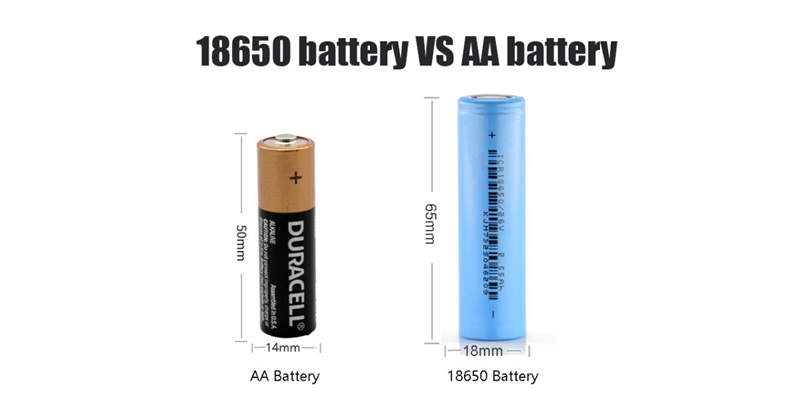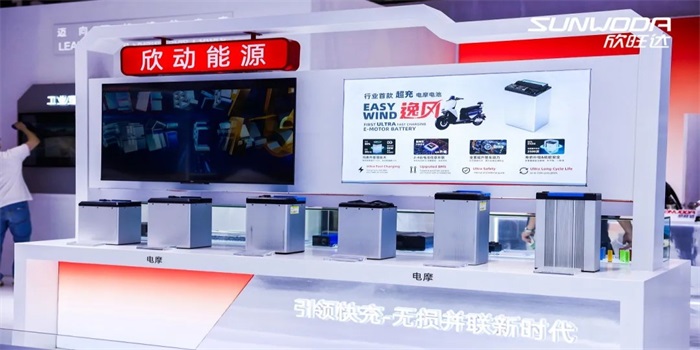Critical Differences Explained: 18650 Battery Vs AA Battery
AA batteries and 18650 batteries appear very similar in shape, both being cylindrical cells. As a result, many people wonder whether these batteries can be used interchangeably to simplify device replacement. However, despite their visual similarity, they differ significantly in dimensions, battery chemistry, voltage, capacity, and other charge/discharge characteristics. When considering substitution or selection, their distinct features should be carefully evaluated. Below we will examine AA batteries and 18650 batteries in detail.
What is AA battery and 18650 battery?

18650 battery size is about 18 x 65 mm. It is slightly larger than an AA battery, have a nominal voltage of 3.2 to 3.7 volts, and a nominal capacity of 1800 to 3500 mAh. AA batteries are smaller than 18650 batteries in size, only about 14 x 50 mm. The standard AA battery has 1.5 volts nominal voltage. And a capacity ranging from 1800 to 2700 mAh.
18650 batteries require BMS protection against overcharge/discharge. They also have no memory effect, allowing partial charging without capacity loss
Rechargeable and non-rechargeable AA batteries differ in their chemical composition. While rechargeable AA batteries—such as those using lithium-ion (Li-ion), nickel-metal hydride (NiMH), or nickel-cadmium (NiCd) chemistries—are now widely available, most people typically refer to non-rechargeable AA batteries when they mention 'AA batteries.
Difference between 18650 battery vs AA battery?
1. Physical Dimensions
18650 Battery
· Cylindrical form factor
· Standard size: 18mm diameter × 65mm length
· Weight: ~45g
AA Battery
· Slimmer cylindrical design (also called 14500 when rechargeable)
· Standard size: 14mm diameter × 50mm length
· Weight: ~23g
2. Chemical Composition
18650 Battery
Exclusively lithium-ion technology
Common cathode materials:
· LiFePO₄ (Lithium Iron Phosphate)
· NCM (Nickel Cobalt Manganese)
AA Battery
Multiple chemistry options:
· Disposable: Alkaline/Zinc-Carbon (1.5V)
· Rechargeable: NiMH (1.2V), NiCd (1.2V), or Lithium-ion (1.5V)
3. Electrical Characteristics
| Parameter | 18650 Battery | AA Battery |
Nominal Voltage | 3.7V (Li-ion) | 1.5V (disposable) |
1.2V (rechargeable) | ||
Typical Capacity | 2000-3500mAh | 600-2700mAh |
Energy Density | 200-300 Wh/kg | 80-160 Wh/kg |
4. Performance & Applications
18650 Battery Advantages
· Higher energy density → Longer runtime
· 500-1000 charge cycles
· Requires BMS protection circuit
· Common in: EVs, power tools, high-end flashlights
AA Battery Advantages
· Universal availability
· No maintenance (disposable versions)
· Safer for basic devices
· Ideal for: Remote controls, clocks, low-drain electronics
5. Special Notes
· Safety: 18650 cells require careful handling due to higher energy content
· Memory Effect: Neither type suffers from memory effect
· Cost Efficiency: AA alkaline batteries often cheaper for infrequent-use devices
Can we replace AA battery with 18650 batteries?
It’s not possible to directly replace 18650 batteries with AA batteries due to a major difference in voltage. The 18650 battery delivers a nominal voltage of 3.7V, while standard AA batteries typically provide only 1.5V. This substantial voltage gap makes them incompatible in most devices. However, 18650 batteries can often be swapped with 21700 batteries, which are also rechargeable lithium-ion cells and share the same 3.7V output, though the 21700 is slightly larger in size.
Where I can find the rechargeable lithium AA Batteries?
As mentioned earlier, standard AA batteries typically measure 14mm in diameter and 50mm in height. Our ELB 14500 lithium battery is specifically engineered to serve as a direct replacement for AA batteries. However, due to the different chemical compositions between lithium and alkaline batteries, there is a notable difference in voltage. Ternary lithium batteries operate at 3.6V, whereas alkaline AA batteries provide only 1.5V. To ensure compatibility, we integrate a built-in step-down PCB (Printed Circuit Board Assembly) to safely reduce the lithium battery’s voltage to 1.5V. If you're interested in learning more, our technical team is available to provide further support and guidance.
Which is a better choice, 18650 batteries or AA batteries
When it comes to commercial use and recognition, AA batteries have a clear lead, having been widely adopted for over two decades. In comparison, 18650 batteries have gained mainstream attention only in the past decade. However, in terms of application potential and performance, 18650 batteries hold a significant edge. They are commonly used in high-demand technologies—Tesla, for instance, equips its Model Y with 18650 battery cells, and these batteries are also the standard choice for most electric motorcycles and scooters due to their superior energy capacity and rechargeability.

